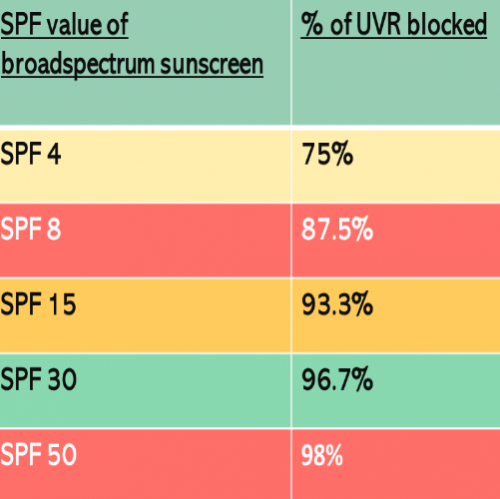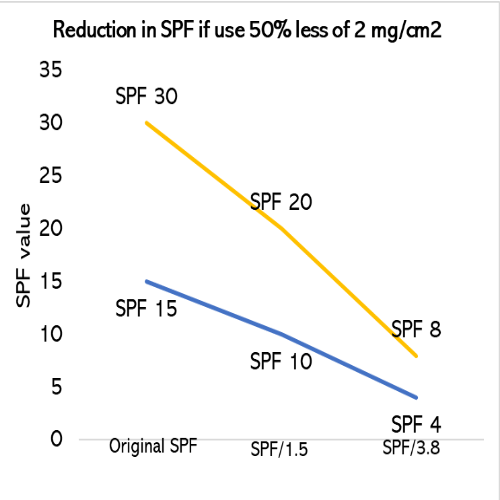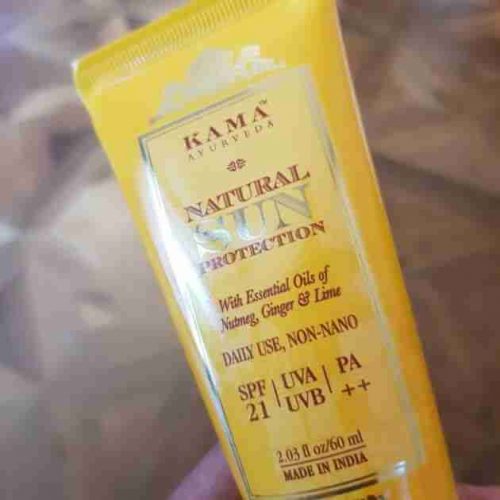I really wanted to like this product, as there are so few Made in India sunscreens that are worth buying.
However, I could not use this product for two reasons.
First, its the overpowering smell of ginger that this product has. If I wanted to smell of ginger ale I would bathe and spray on ginger ale. I appreciate that the Zinc Oxide filter does need a masking agent but seriously ginger?
Secondly, the sunscreen fails my test, which is explained below:
Happy Skin Days’ sunscreen test

Harmful chemicals present?
The product’s ingredient label does not contain any of the harmful chemicals that I look for, namely parabens, Oxybenzone and BHT).
Is the minimum SPF of the product SPF 30?
No, its SPF 21.
Leaning on my blog (Is SPF 50 really better than SPF 15?) I’ll explain why < SPF 30 is just not good enough.
This table shows that SPF 50 blocks 98% of UVR and SPF 15 blocks 93.3%

Source: aparnsaLet’s be honest: the level of protection is not that different.
The reason why reject < SPF 30 products is not because of the lack of UVR protection offered but BEHAVIOURIAL.
SPF measurement and non-linear correlation with quantity applied
The SPF of sunscreens are measured under strict conditions in a lab and an important premise in this test, is the quantity of sunscreen. It must consistently be 2 mg/cm2
The SPF value ONLY holds if you apply the correct amount of sunscreen, which is bizarre because I haven’t met a single person who can eyeball 2 mg/cm2 correctly.
Therefore, it should come as no surprise that studies persistently show:
- People typically apply 0.5 to 1.5 mg/cm2 of sunscreen in real life instead of the 2 mg/cm2 dosage prescribed in SPF test.
- The cosmetic elegance of a sunscreen determines how much we apply. If a sunscreen is easier and less chalky and less gunky, people apply closer to the 2 mg/cm2 dose.
What happens when you apply less sunscreen?
“when the dose (i.e., 2 mg/cm2) is halved, the SPF is divided by a variable factor according to the product, from 1.5 to 3.8.”
Influence on SPF of the quantity of sunscreen product applied (full reference IN this BLOG)

As you can see SPF 15 very quickly becomes SPF 10 or SPF 4. This is exactly why I don’t suggest anyone use SPF 15 or SPF 21….
What are the filters present in this product?
The UV filters are Zinc Oxide and Titanium Dioxide. Both are photostable, broadspectrum filters and complement each other’s performance. Zinc Oxide provides superior UVA protection and Titanium Dioxide provides superior UVB protection.
You can read more at Zinc Oxide 101 and Brace, Brace (overview of US sunscreen regulation)
Which sunscreen can I use?
I have a few recommendations in these blogs:
Personally, I use Ultrasun, which is a Swiss brand that provides superior UVA protection as I am concerned about UVA indudced photoaging.
I don’t usually recommend Ultrasun on my blog, because it’s so hard to find outside Europe. But otherwise, it is my go-to sunscreen.
